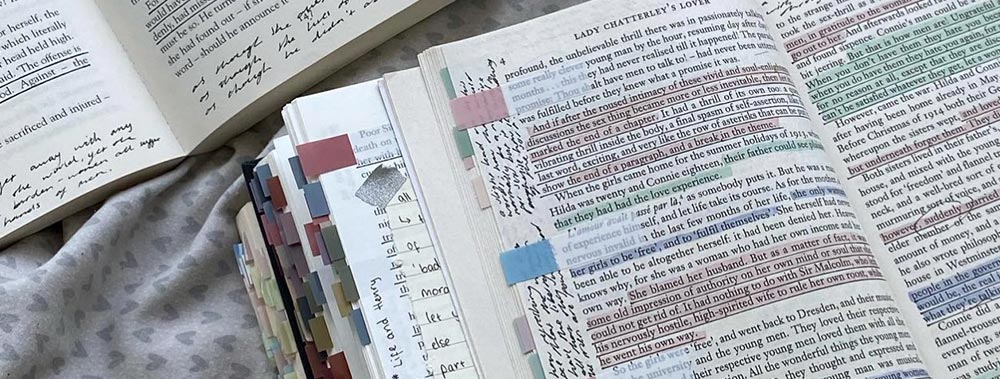The Crucible: Summary, Plot, Characters, Literary Analysis & More
“The Crucible” is a dramatic play written by the renowned American playwright Arthur Miller, initially published in 1953.
This theatrical masterpiece stands as one of Miller’s most acclaimed works, delving into the Salem witch trials of the 17th century.
The play centers around John Proctor, Elizabeth Proctor, Abigail Williams, and Reverend Hale as major characters, and it portrays the harrowing events that unfold when a group of girls in Salem falsely accuse individuals of witchcraft.
“The Crucible” addresses themes of mass hysteria, manipulation, and the consequences of societal pressure.
This “The Crucible” summary explores the plot, characters, themes, and literary analysis of Miller’s exploration of human worth and the impact of false accusations.
The Crucible Summary
The story unfolds as a tightly-knit Puritan community succumbs to mass paranoia, accusing its own members of witchcraft.
The young Abigail Williams, fueled by her desire for vengeance and obsession with John Proctor, falsely accuses various individuals, sparking a chain reaction of accusations.
As the town plunges into chaos, personal vendettas and hidden agendas emerge.
John Proctor, a flawed but principled farmer, becomes the central figure who challenges the deceit, risking his reputation and life to expose the truth.
Theocratic leaders exploit the crisis to consolidate their authority, revealing the dangers of unchecked power and religious zealotry. The court trials, fueled by mass hysteria and religious fervor, lead to tragic consequences, including the wrongful execution of innocent citizens.
Miller’s allegorical depiction of the witch trials serves as a commentary on the McCarthy-era anti-communist witch hunts and the broader human propensity for scapegoating and moral compromise.
“The Crucible” underscores the fragility of justice in the face of irrationality and the enduring relevance of its themes in different historical contexts.

"The Crucible" underscores the fragility of justice in the face of irrationality.
Table of Contents
Summary The Plot Characters Key Themes Genres Language used Literary devices Summing upThe Plot
Set against the backdrop of the infamous Salem witch trials, “The Crucible” by Arthur Miller weaves a tale of trepidation and deceit. John Proctor, a complex protagonist, grapples with his morality while his wife, Elizabeth Proctor, faces accusations.
Abigail Williams, fueled by vengeance, sows chaos by accusing innocent people, including Rebecca Nurse and Giles Corey. The arrival of the earnest Reverend Hale only exacerbates the hysteria.
As Mary Warren is manipulated and truth becomes malleable, the community is torn apart by accusations and paranoia. The play delves into the darkness of human nature, highlighting the destructive power of lies and mass delusion.
Characters
Within Arthur Miller’s gripping play “The Crucible,” a diverse cast of characters grapples with the complex interplay of fear, morality, and societal pressures in the backdrop of the Salem witch trials.
Set in the crucible of a tightly-knit Puritan community, each character represents a facet of human nature, from virtue to vice, as they navigate the perilous landscape of accusations and deceit.
Miller masterfully crafts a spectrum of personalities, motivations, and conflicts, reflecting the multifaceted dimensions of the human experience.
As we delve into the characters that populate this dramatic narrative, we uncover the profound psychological and emotional intricacies that drive the events of the play and shed light on the timeless themes of identity, integrity, and the consequences of blind allegiance.
John Proctor
A central figure in “The Crucible,” John Proctor is a flawed but principled man who struggles with guilt over his affair with Abigail Williams. He’s accused of witchcraft but ultimately faces a moral dilemma that reveals his integrity.
Arthur Miller
As the author of “The Crucible,” Arthur Miller crafts a chilling narrative reflecting on historical events while highlighting themes of mass hysteria and human nature’s darker facets.
Elizabeth Proctor
Elizabeth Proctor, John’s wife, embodies resilience and morality. Falsely accused of witchcraft by Abigail Williams, Elizabeth’s strength lies in her unwavering commitment to truth and her husband.
Giles Corey
Giles Corey, a straightforward and determined man, is accused of witchcraft due to his inquiries into his wife Martha Corey’s reading habits. Despite facing torture, Corey refuses to yield to the unjust accusations.
Reverend Hale
Reverend Hale is an expert in identifying witchcraft, initially fervently believing in the accusations. As he witnesses the escalating chaos, his faith is shaken, and he becomes a voice of reason, striving to rectify the wrongs.
Mary Warren
Mary Warren is both a victim and an instigator. Initially part of the group of girls accusing townspeople, she later struggles to stand up against the deceit orchestrated by Abigail Williams.
Rebecca Nurse
A symbol of virtue and kindness, Rebecca Nurse faces accusations of witchcraft. Her calm demeanor and unwavering faith expose the absurdity of the allegations.
Reverend Parris
Reverend Parris is a divisive and self-serving figure who exacerbates the hysteria to protect his reputation. His obsession with status and power fuels the chaos within the town.
Ann Putnam
Ann Putnam is consumed by grief, having lost seven children. She sees Rebecca Nurse as responsible and fuels the witch hysteria, blinded by her pain.
Francis Nurse
Francis Nurse is a respected member of the community, whose wife, Rebecca Nurse, is accused of witchcraft. He rallies the townspeople to seek justice for the falsely accused.
Ezekiel Cheever
Ezekiel Cheever is a clerk of the court, tasked with arresting those accused of witchcraft. His loyalty to the court causes him to participate in the injustices.
Judge Danforth
Judge Danforth presides over the witch trials with unwavering authority. His refusal to admit error contributes to the tragedy, showing the dangerous consequences of unchecked power.
Mercy Lewis
Mercy Lewis is one of the girls involved in the accusations, often following Abigail Williams. Her blind obedience showcases the sway of manipulation.
Betty
Betty, Reverend Parris’ daughter, initiates the witch hysteria by pretending to be bewitched. Her actions set off a chain reaction of chaos and accusations.
Martha Corey
Martha Corey is falsely accused of witchcraft due to her reading habits. Her case highlights the absurdity of the trials and the community’s susceptibility to manipulation.
Ruth
Ruth is the daughter of Thomas Putnam and is afflicted by a mysterious illness. Her condition becomes a tool for the Putnams to accuse others of witchcraft.
“The Crucible” masterfully portrays the range of human responses in times of crisis, from heroism to cowardice, innocence to manipulation, reminding us of the fragility of truth and justice.
Key Themes
“The Crucible” explores themes of integrity and the consequences of moral choices. John and Elizabeth Proctor embody these themes as they navigate the trials.
John’s struggle to admit his affair demonstrates his journey toward honesty, while Elizabeth’s refusal to lie reveals her unwavering moral stance.
Their personal growth showcases the complexity of human nature and the importance of staying true to one’s principles, even in the face of dire consequences.
Integrity and the Consequences of Moral Choices
One of the central themes in Arthur Miller’s “The Crucible” is the exploration of integrity and the far-reaching consequences of moral choices in the face of societal pressure and personal gain.
The characters’ decisions to uphold their principles or succumb to the demands of authority highlight the complexities of human nature and the moral dilemmas posed by an environment of fear and manipulation.
John Proctor’s Struggle for Integrity
John Proctor, a pivotal character, grapples with maintaining his integrity in the midst of the witch trials. Initially, he seeks to distance himself from the hysteria and avoid involvement.
However, as the situation escalates and innocent lives are threatened, he is compelled to confront his own past transgressions and make a stand against the corrupt court.
Despite his flaws, Proctor’s refusal to sign a false confession showcases his ultimate commitment to honesty and integrity. His declaration, “Because it is my name! Because I cannot have another in my life!” underscores the importance of personal integrity over external reputation.
Reverend Hale’s Evolution
Reverend Hale undergoes a transformation from an eager investigator seeking witches to a man grappling with the moral consequences of his actions.
Initially, he arrives in Salem with an unwavering belief in the court’s authority. As the trial progresses, he becomes increasingly disillusioned by the injustice and false accusations.
Hale’s realization that he has contributed to the suffering of innocent people reflects the theme that moral choices have profound consequences not just for oneself, but for society as a whole.
Abigail Williams’ Manipulation and Self-Preservation
Abigail Williams, driven by her desire for revenge and control, exemplifies the dark side of moral choices. She manipulates the situation to her advantage, falsely accusing others of witchcraft while maintaining her own innocence.
Abigail’s willingness to deceive and betray others for personal gain illustrates the corrosive impact of sacrificing integrity for selfish motives.
In “The Crucible,” Miller portrays the intricate web of moral choices and their repercussions, showcasing the tension between societal conformity and individual integrity.
The play underscores that personal integrity often comes at a high cost, but the characters who choose to uphold their principles rather than succumb to fear or manipulation ultimately demonstrate the enduring strength of the human spirit.
Genres in The Crucible
Arthur Miller’s “The Crucible” defies easy genre classification, blending historical drama with allegory and tragedy. The historical setting of the Salem witch trials provides the backdrop for a deeply symbolic exploration of societal paranoia and moral decay.
The fusion of these genres creates a multifaceted narrative that delves into human psychology while echoing the tragic themes of classical literature.
“The Crucible” by Arthur Miller is a historical drama that employs allegorical and tragic elements to create a powerful and thought-provoking narrative. Let’s break down how the play fits into these categories:
Historical Drama
“The Crucible” is deeply rooted in historical context, as it is set against the backdrop of the Salem witch trials that occurred in the late 17th century.
The play portrays the real-life events of that time, when a Puritan community in Massachusetts was gripped by hysteria, leading to the wrongful accusations and executions of numerous individuals accused of witchcraft.
Miller meticulously researches and recreates this historical period, capturing the religious, social, and political dynamics that contributed to the witch trials.
Allegory
While “The Crucible” is based on historical events, it also serves as an allegory for McCarthyism and the Red Scare of the 1950s.
During this period, Miller himself faced scrutiny and was accused of being a communist sympathizer. By drawing parallels between the witch trials and McCarthyism, Miller critiques the dangers of mass hysteria, the abuse of power, and the manipulation of fear for political gain.
The characters and situations in the play represent broader societal issues, allowing audiences to reflect on the themes of persecution, conformity, and the destructive consequences of unchecked authority.
Tragedy
The play exhibits characteristics of a tragedy, following the trajectory of a protagonist, John Proctor, who faces a downfall due to his own flaws and external circumstances.
Proctor’s tragic flaw is his affair with Abigail Williams, which haunts him and puts him in a moral dilemma as he navigates the witch trials.
The tragic tension escalates as the characters’ choices lead to irreversible consequences, culminating in a climactic and emotionally intense ending. The play’s tragic nature lies in its exploration of human weaknesses, the inevitability of suffering, and the haunting effects of guilt.
Language used in The Crucible
Miller’s writing style in “The Crucible” is both evocative and precise, capturing the tension and fervor of the era.
Through vivid descriptions and dialogue, he creates an atmosphere charged with fear and suspicion, immersing readers in the psychological and emotional turmoil of the characters.
The language effectively conveys the mounting hysteria, mirroring the chaotic events and reflecting the raw emotions that drive the story.
Literary devices in The Crucible
Arthur Miller masterfully employs various literary devices to enrich the narrative. Through allegory, he parallels the Salem witch trials with McCarthyism, highlighting the dangers of unchecked power.
Symbolism, like the titular “crucible,” underscores the characters’ moral transformations. Irony pervades the plot, exposing the contradiction between professed righteousness and personal motives. These devices collectively deepen the story’s themes, making it a poignant commentary on human behavior and society.
Similes
Miller employs similes to enhance reader engagement. Upon Reverend Hale’s arrival, his demeanor is akin to that of “a specialist in the invisible world,” showcasing his expertise.
When Hale begs Elizabeth, his urgency resembles “a child begging for a penknife,” intensifying his desperation. These similes evoke relatable imagery, deepening character portrayal and interactions.
Metaphors
Metaphors in the play enrich themes. John Proctor’s confession becomes a metaphor for revealing his true character. The courtroom serves as a metaphorical stage for societal judgment, as seen when George Jacobs and Martha Corey face unjust convictions.
These metaphors add depth and symbolism, enriching meaning and underlining broader implications.
Analogies
Analogies in “The Crucible” aid understanding. As Abigail threatens others, her manipulation is likened to “a bird darting through the air,” capturing her calculated actions.
Betty’s awakening is compared to “a cat’s leap,” emphasizing its suddenness. These analogies offer tangible comparisons, clarifying emotions and actions, and aiding comprehension of pivotal moments.
Imagery
Arthur Miller’s “The Crucible” employs vivid imagery to immerse readers. When Reverend Hale arrives, his presence is likened to a “specialist in the invisible world,” invoking his expertise. As Betty wakes, her awakening is a “cat’s leap,” capturing the suddenness.
When John Proctor arrives, his entrance is a “presence of one,” drawing focus. The sensory details, from Reverend Hale’s purposeful arrival to John Proctor’s impactful entrance, create an evocative experience, enriching the narrative’s depth.
Symbolism
Miller masterfully weaves symbolism to illuminate broader themes. The arrest of Elizabeth embodies the erosion of justice in a climate of fear. John Hale represents the shift from unwavering faith to skepticism, mirroring the town’s evolution.
Proctor’s confession stands as a cathartic release from moral torment. The accusation of George Jacobs mirrors the abuse of authority. Abigail’s dismissal reflects the waning innocence.
Martha Corey’s conviction highlights the peril of unjust persecution. These symbols enrich the exploration of truth, hysteria, and societal integrity within the play’s context.
Personification
Miller employs personification to enrich characters and settings. When Elizabeth lies, deceit takes on a palpable persona, shaping her actions.
As she talks with John, their relationship gains depth. Daughter Ruth’s affliction personifies the town’s vulnerability. When Elizabeth is discovered, her guilt becomes a tangible presence. Goody Osborne embodies societal suspicion.
Proctor reveals exposes truth’s personified impact. Abigail’s admission portrays her internal struggle. Miller wrote breathed life into the narrative. Mary tells, imbuing her words with authority. Other girls signify a collective force. Ezekiel Cheever personifies the court’s reach.
Hyperbole
In “The Crucible,” Arthur Miller skillfully wields hyperbole to heighten the drama. As Proctor confesses, his admission magnifies the weight of his burden. The decision to accuse George Jacobs is exaggerated, showcasing the destructive power of false accusations.
The act of firing Abigail is a grand gesture. Fired Abigail is amplifying the tension and consequences. When the court convicts Martha Corey, the overstatement emphasizes the tragedy of the unjust legal system.
These hyperboles intensify emotions and emphasize the dire consequences of societal hysteria.
Irony
In “The Crucible,” Arthur Miller masterfully employs irony, enriching the narrative. When Abigail tells Proctor she’s free from blame, it’s dramatic irony as the audience knows the opposite.
Mary Warren tells of accusations, her irony highlighting the power shift. Her accusation that she’s bewitched by Proctor, her employer, is situational irony due to their actual innocence.
The niece Abigail embodies the irony of manipulating those close. The supposed sanctity of the Proctor household contrasts with its turmoil, a form of verbal irony.
Juxtaposition
In “The Crucible,” juxtaposition serves to accentuate contrasts, provoking thought. The girls accused Elizabeth and that starkly contrasts her steadfast denial, revealing the truth’s vulnerability. Accusing Proctor underscores his struggle for integrity amid deception.
The intimate talk between John and Elizabeth exposes their complex relationship against the backdrop of the accusations. Daughter Ruth and her affliction contrast innocence with the hysteria’s grasp.
The revelation of Elizabeth’s discovery amplifies the tension between secrecy and exposure. These juxtapositions deepen the exploration of truth and deceit.
Paradox
In “The Crucible,” paradoxes abound, illuminating conflicting truths. Abigail denies involvement in witchcraft, a paradox as her actions fuel the hysteria. When Ezekiel Cheever questions Abigail, the very authority seeking answers is paradoxically dubious.
The dancing in the woods, seemingly innocent, catalyzes sinister events. Marshal Herrick is charged with protecting but also persecuting. As Betty wakes, she ushers in chaos. Proctor spoke, revealing yet concealing.
The affair with Abigail is both passionate and destructive. Danforth refuses to see the truth. Giles refuses, paradoxically silent. The proctor’s home holds both intimacy and tension. Elizabeth’s inner conflict is mirrored. Abigail seeks both love and revenge, embodying human complexity.
Allusion
In “The Crucible,” Betty’s condition alludes to historical witch hunts, illustrating mass hysteria’s destructive force. When Proctor speaks, his resistance mirrors historical figures who defied oppressive regimes. The Tony Award symbolizes the play’s recognition and relevance.
Parris’s claims invoke historical manipulation of faith for control. Hale’s questions echo inquisitions, exposing the fragile line between justice and persecution. Proctor’s agreement resonates with historical compromises. The Proctor home juxtaposes safety and turmoil.
As Abigail is told, echoes of past manipulations resound. John’s agreement reflects historical power dynamics. Proctor’s questioning parallels historical struggles for justice.
Betty’s illness references historical hysteria, and the local farmer underscores the ordinary caught in extraordinary events.
Allegory
“The Crucible” is an allegory that skillfully mirrors the 1692 Salem witch trials to address universal themes. Betty’s affliction symbolizes societal vulnerability.
Parris’s claims allegorically critique manipulative religious authority. Hale’s questioning echoes ideological investigations. Proctor’s agreement reflects compromise amid oppression. Abigail’s revelation unveils hidden motives.
John’s consent reflects acquiescence to societal norms. The talk between John and Elizabeth represents strained relationships. Accusing Proctor symbolizes the danger of false accusations. Elizabeth’s discovery allegorically exposes personal truths.
Abigail’s admission reveals inner conflict. Other girls embody collective hysteria. Elizabeth’s denial echoes the peril of denial.
Ekphrasis
“The Crucible” doesn’t explicitly feature ekphrasis, but it vividly portrays significant events. When officers arrest Elizabeth, the scene paints a vivid image of the tumultuous atmosphere.
Elizabeth denies and Mary’s retraction is narratively depicted, capturing their emotional turmoil. The portrayal of Proctor’s collaboration with the devil creates a vivid mental image of the accusations’ severity.
Though not ekphrasis in the traditional sense, these portrayals conjure powerful mental imagery, enhancing the reader’s engagement with the narrative.
Onomatopoeia
In “The Crucible,” onomatopoeia subtly engages the auditory senses. As Abigail and Betty begin to call out names, their voices punctuate the chaos. Parris claims he saw the girls naked and that resonate with authority.
Hale questions a lot and that creates echo throughout the narrative, emphasizing his inquisitive nature. When Abigail told the court what she had to tell, the words convey urgency.
While sparingly used, these onomatopoeic elements infuse the narrative with auditory dimensions, accentuating emotions and intensifying the impact of key moments in the story.
Puns
Puns in “The Crucible” are rare, but they do contribute to the narrative’s complexity. When Mary retracts her allegations and accuses Proctor of collaborating with the devil, the wordplay on “collaborating” adds a double meaning, implying both conspiring with evil and working together.
The phrase to talk John into confessing cleverly plays on the word “talk” as both persuasion and communication. Finally, John agrees resonates with the agreement and amplifies the pivotal nature of his decision.”
Repetition
In “The Crucible,” repetition amplifies themes and emotions. Questions Proctor signifies the relentless pursuit of truth, revealing the theme of seeking justice. Proctor agrees encapsulates his internal struggle, culminating in a pivotal decision that affects the story’s outcome.
The repetition reinforces his moral dilemma and emphasizes the weight of his choice. Through this device, Arthur Miller intensifies both character development and the narrative’s exploration of truth, guilt, and integrity.
The Use of Dialogue
Arthur Miller employs dialogue skillfully in “The Crucible” to reveal character traits and tension. When Abigail admitted her intentions, her manipulative speech unveils her cunning and obsession. When Elizabeth discovered the affair, her measured words reveal her internal conflict.
Through dialogue, Miller illuminates characters’ motivations and emotions, while also advancing key themes such as deception, morality, and the destructive power of secrets. The exchanges create a layered narrative that engages readers with its intricacies.
Word Play
Word play abounds in “The Crucible,” with techniques like puns and double entendre adding depth. When Mary retracts allegations to accuse Proctor of collaborating with the devil, the term “collaborating” cleverly entwines both collaboration and complicity, enriching meaning.
Such linguistic playfulness contributes to humor, subtle irony, and a nuanced layer of interpretation in Arthur Miller’s exploration of truth and deception.
Parallelism
Instances of parallelism structure and reinforce themes in “The Crucible.” As characters like John Proctor and Elizabeth navigate moral dilemmas, their parallel struggles illuminate the complexity of integrity.
Parallelism emphasizes the broader societal tension between justice and hysteria, contributing to a rich thematic resonance and highlighting the interplay between individual decisions and collective consequences.
Rhetorical Devices
Arthur Miller employs rhetorical devices to persuade and provoke thought in “The Crucible.” Rhetorical questions, like Hale’s questioning of witchcraft, engage readers to question societal beliefs. Parallelism, as seen in John’s agreement and Elizabeth’s denial, reinforces their internal conflicts.
These devices amplify the characters’ emotional turmoil and the story’s allegorical impact, urging readers to reflect on truth, morality, and the dangerous dynamics of unchecked authority.
The Crucible: FAQs
This section aims to shed light on the most common inquiries that arise when exploring the depths of this historical drama.
From inquiries about its historical accuracy to discussions on its allegorical nature and thematic resonance, we hope to provide insightful answers that enhance your understanding of the play’s complexities.
How much of The Crucible is true?
“The Crucible” is based on the historical events of the Salem witch trials, but Arthur Miller used creative liberties in adapting the facts to create his play.
Was Abigail Williams a real person?
Yes, Abigail Williams was a real person involved in the Salem witch trials.
Were John Proctor and Abigail Williams real?
Yes, John Proctor and Abigail Williams were real people during the Salem witch trials. However, the specifics of their relationship in the play may differ from historical records.
What is The Crucible based off of?
“The Crucible” is based on the Salem witch trials of 1692, a period of mass hysteria and witchcraft accusations in colonial Massachusetts.
What happened to Abigail Williams in real life?
The historical fate of Abigail Williams is not definitively known. After the trials, she disappears from the historical record, and there are no confirmed details about her later life.
How old was Abigail Williams when she died?
The exact date and age of Abigail Williams at the time of her death are not known.
Does The Crucible have a happy ending?
No, “The Crucible” does not have a happy ending. It concludes with tragic outcomes and the unraveling of characters’ lives due to the witch trials.
How does the book Crucible end?
The play ends with John Proctor’s decision to confess to witchcraft to save his life but ultimately tearing up his confession to maintain his integrity. He chooses to die honorably, and the play concludes with a sense of tragedy and loss.
What does The Crucible show us?
“The Crucible” exposes the dangers of mass hysteria, the consequences of unchecked authority, and the ways fear and manipulation can lead to injustice and moral compromise.
Did The Crucible actually happen?
Yes, the events of the Salem witch trials, which serve as the basis for “The Crucible,” did actually happen in 1692 in colonial Massachusetts. However, Miller’s play takes artistic liberties in its adaptation of these historical events.
Summing up: The Crucible: Summary, Plot & More
“The Crucible” by Arthur Miller serves as a potent mirror to history and a timeless exploration of human behavior. Amidst the backdrop of the Salem witch trials, John Proctor’s transformative journey from moral frailty to redemption epitomizes the struggle for integrity.
The narrative’s intertwining of accusations, deceit, and power dynamics underscores the vulnerability of truth.
Miller’s characters, themes of truth and integrity, and allegorical undertones reverberate, leaving an indelible imprint on the reader’s conscience, reminding us of the dangers of societal hysteria and the enduring power of moral fortitude.
Other Notable Works by Arthur Miller
If you are interested in this book, you may be interested in other works by this author:
- “Death of a Salesman“: This play by Arthur Miller explores the life of Willy Loman, a struggling salesman whose pursuit of the American Dream leads to personal and familial turmoil. Through Willy’s tragic journey, the play examines themes of identity, disillusionment, and the cost of unrealistic aspirations.
- “A View from the Bridge“: Also by Arthur Miller, this play delves into the life of Eddie Carbone, a longshoreman in Brooklyn. The story unfolds as Eddie’s overprotectiveness for his niece, Catherine, leads to jealousy and conflict when she falls for an immigrant. The play explores themes of loyalty, justice, and the consequences of unchecked desires.
- “All My Sons“: Another work by Arthur Miller, this play revolves around Joe Keller, a businessman who sold defective airplane parts during World War II, resulting in the deaths of several pilots. As the truth surfaces and impacts his family, the play addresses themes of responsibility, moral reckoning, and the profound effects of hidden actions.
- “The Price“: This play by Arthur Miller centers on two brothers who reunite to sell their deceased father’s belongings. The brothers confront their past, their choices, and the emotional costs of their life paths. The play examines themes of family dynamics, regret, and the value of personal sacrifices.
- “After the Fall“: Also written by Arthur Miller, this introspective play follows Quentin, a lawyer whose relationships with women, including his former wife and a troubled singer, prompt him to examine his own guilt and past actions. The play delves into themes of self-reflection, moral ambiguity, and the complexities of personal relationships.







